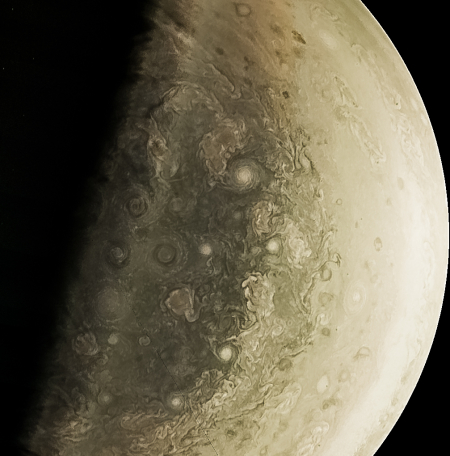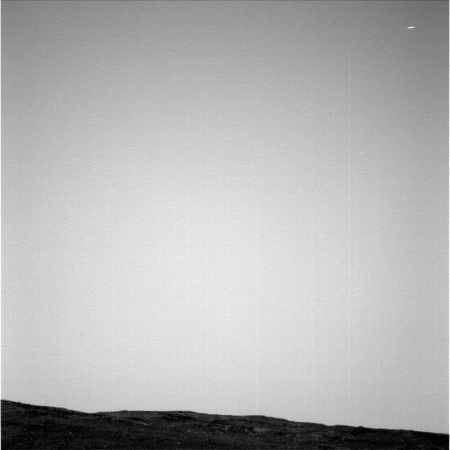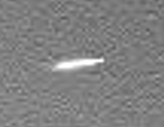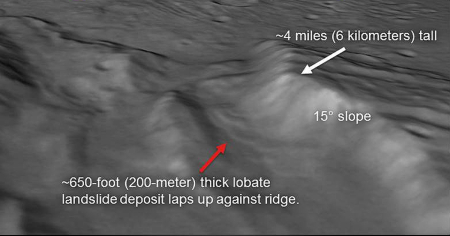Chinese smallsat snaps pictures of Chinese space station
One third of the way through their month long mission, on Sunday the two Chinese astronauts aboard Tiangong-2 released a smallsat designed to maneuver around the station and take images of it.
The cubical craft deployed from Tiangong 2 on Sunday is about the size of a printer, and it took sharp black-and-white pictures of the space lab and the Shenzhou 11 crew transport craft docked together around 235 miles (380 kilometers) above Earth. Fitted with a 25-megapixel camera and an ammonia-based propulsion system, the Banxing 2 satellite is expected to loiter around Tiangong 2 and Shenzhou 11, and eventually return to the vicinity of the complex to take pictures from above with Earth in the background, according to Chinese state media reports.
The first batch of photos from Banxing 2’s departure are looking up at the mini-space station complex, with the blackness of space as a backdrop. In addition to the imagery taken by the micro-satellite’s visible camera, Banxing 2 captured more than 300 infrared pictures during the flyaway sequence.
This is a neat idea, one that neither Russia nor the U.S. ever did on their stations. Moreover, to provide this smallsat a propulsion system is significant, since satellites this small have traditionally not had one. Testing that system is certainly one of the smallsats main purposes.
The image at the link of the station and capsule docked together reveals how relatively small Tiangong-2 really is, compared to the Shenzhou manned spacecraft as well as other Russian single module stations. Shenzhou is about as long as Tiangong, and though the Chinese have made their manned capsule bigger than the Soyuz spacecraft they based it on, it isn’t that much bigger. In fact, the article says that the combined station and spacecraft is about 60 feet long. Russia’s Salyut stations, which were also a single module like Tiangong-2, were about that long, before the Soyuz was added.
In other words, Tiangong-2, as was Tiangong-1, are exactly what the Chinese have said they are, prototype testbeds for testing the engineering needed for building a much bigger multi-module station in 2020. What is unclear is whether the modules of that bigger station will be bigger as well.
One third of the way through their month long mission, on Sunday the two Chinese astronauts aboard Tiangong-2 released a smallsat designed to maneuver around the station and take images of it.
The cubical craft deployed from Tiangong 2 on Sunday is about the size of a printer, and it took sharp black-and-white pictures of the space lab and the Shenzhou 11 crew transport craft docked together around 235 miles (380 kilometers) above Earth. Fitted with a 25-megapixel camera and an ammonia-based propulsion system, the Banxing 2 satellite is expected to loiter around Tiangong 2 and Shenzhou 11, and eventually return to the vicinity of the complex to take pictures from above with Earth in the background, according to Chinese state media reports.
The first batch of photos from Banxing 2’s departure are looking up at the mini-space station complex, with the blackness of space as a backdrop. In addition to the imagery taken by the micro-satellite’s visible camera, Banxing 2 captured more than 300 infrared pictures during the flyaway sequence.
This is a neat idea, one that neither Russia nor the U.S. ever did on their stations. Moreover, to provide this smallsat a propulsion system is significant, since satellites this small have traditionally not had one. Testing that system is certainly one of the smallsats main purposes.
The image at the link of the station and capsule docked together reveals how relatively small Tiangong-2 really is, compared to the Shenzhou manned spacecraft as well as other Russian single module stations. Shenzhou is about as long as Tiangong, and though the Chinese have made their manned capsule bigger than the Soyuz spacecraft they based it on, it isn’t that much bigger. In fact, the article says that the combined station and spacecraft is about 60 feet long. Russia’s Salyut stations, which were also a single module like Tiangong-2, were about that long, before the Soyuz was added.
In other words, Tiangong-2, as was Tiangong-1, are exactly what the Chinese have said they are, prototype testbeds for testing the engineering needed for building a much bigger multi-module station in 2020. What is unclear is whether the modules of that bigger station will be bigger as well.







